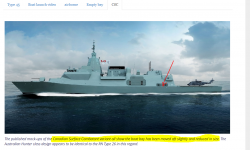- Reaction score
- 22,063
- Points
- 1,360
Lumber said:Unfortunately, yes...
No problem, thought you were pulling my leg. If I put my radar engineer hat on for a second, they’re really referring to ‘solid state’ as in what generates the transmitted signal. In a nutshell, the newer active electronic (fully solid-state) scanning array (AESA) radars are composed of an array of hundreds (or thousands) of transmit/receive modules (TRMs). Each TRM has on average 10-25W of averages transmitted power - total array power is then element power x number of elments, which is where can see AESA radars in the 3kW to 10kW avg power range. The transmitted beam is then the addition of all the individual TRM beams, taking into account any phase-shifting the radar processor (RP) is going to apply to the array to steer the beam in the desired direction (electronically-scanned part of AESA). Older radars based on klystrons, magnetrons and travelling wave tubes, while considered modern electronics (in the 20th century sense), may have some solid state components (like transistors, etc.) but their main power is derived from a large single source that then is distributed either through a single feed to to a horn on a classic parabolic mechanically-scanned antenna, or on slightly more modern flat mechanically-scanned antenna with a feed network that subdivides the main source’s signal across the face of the antenna.
So, solid-state is a bit of an older, less precise term. More accurately they would have described CSC’s radar as a modern, multi-mode AESA radar.
Cheers,
G2G



